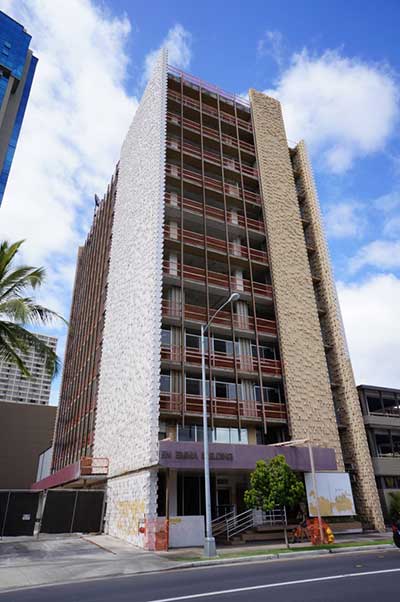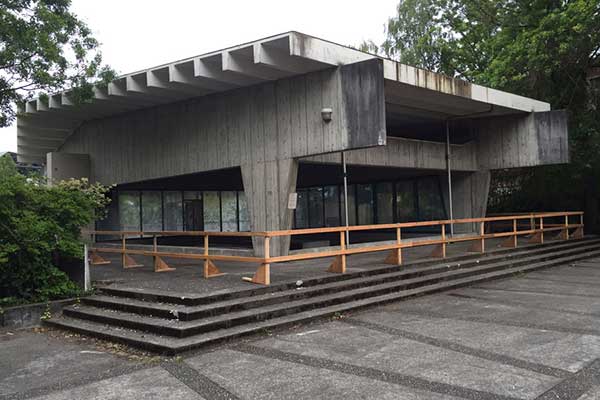Time and time again, you hear someone ask why anyone would want to keep an “ugly” building or a building that is dirty and clearly in need of work or such a simple, uninteresting building. I guess you could say we preservationists look at buildings through a different lens—a lens that can see the swan in the ugly duckling; the story in the simple lines; the book behind the cover. Looking past the years of dirt and neglect, it’s our job as preservationists to teach people about the lessons learned from our historic resources. This is no doubt something we can always work harder on.

Queen Emma Building, Downtown Honolulu

Nuclear Reactor Building, University of Washington, Seattle
For example, take the Queen Emma Building, aka the “pimple” building. While people may remember that building being named as one of the ugliest buildings in town in a Charles Memminger poll in 2005, the lens through which a preservationist will view the building is that it is a uniquely constructed building that had an artistically done brise soleil. While many people think the unusual way the bricks are protruding look like pimples, the story to be told is how the designer used standard concrete bricks in a very inexpensive way to form a decorative wall. The metal brise soleil provided screens on the south side, which today would garner ppoints for sustainability. It is like a Mid-Century Modern sculpture. Unfortunately, part of that sculpture, the brise soleil, was removed in 2011 in a previous concept to make a sleek glass box from the building, to make the building look like many of the contemporary buildings in town.
Sometimes a building or site depicts a part of our history that is unpleasant or uncomfortable for many of us, such as the nuclear reactor building at the University of Washington, Seattle, which was very recently demolished despite a lot of protests from local preservationists. The building was designed in the brutalist style that was glass on the bottom to convey a sense of transparency for nuclear engineering studies
When it was built in 1961 the building was the epitome of what the nation thought of the future — learning about nuclear power in an open forum. Today, people dislike the idea of nuclear power and thus the nuclear engineering program and thus the building, even though it is a pivotal part of our history. Unfortunately, there will no longer be that physical evidence of the great hope for—and ultimate fear of—nuclear power at the University of Washington, a place that should be an institute for learning.
Sometimes people remember a beautiful site or building that was replaced by a “horrid” piece of architecture and can’t get over their grudge, even when that building becomes an important part of our story. This is particularly true in places like San Francisco where many preservationists themselves dislike anything newer than the Victorian era. Yes, it is true that 50 years ago it was a tragic event that many failed to appreciate the Victorian buildings and let many get torn down, but those losses also tell another important story. It tells the story of the 1950s and 1960s when there was hope in new technology, for a more egalitarian society, with inexpensive housing for the working class. Should that history be wiped from our memories, replaced by faux Victorians?
Preservation is not just about keeping pretty, well-kept buildings, but is meant to convey parts of our history. Our history, our collective history. Not just the history of huge events of World War II or Statehood or the illegal overthrow of the Hawaiian government, but the story of how everyone used to go to a certain corner market or how the people lived segregated in the quiet plantation town and ultimately more egalitarian living. The stories of the laborers, the working class, race struggles is just as important in the development of Hawaii’s Big Five. Our history cannot be told only in buildings that meet someone’s criteria of beauty; sometimes our history is painful, but no less important.

